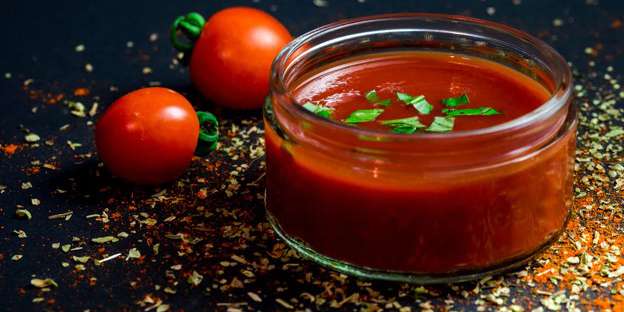Issues in Maintaining Tomato Red Ketchup
Before the 1900s, commercially produced ketchup included highly harmful preservatives, including borax salicylic acid, benzoate of soda, benzoic, and formaldehyde.2 This practice was outlawed in the early part of the 20th century, and today, manufacturers rely on the natural acidity in tomatoes along with sweetening agents that provide a longer shelf life, like high fructose corn syrup.
However, consumers are increasingly demanding that manufacturers reduce sugar content and artificial ingredients in foods and the declining market for ketchup shows they’re willing to forgo foods that don’t meet these standards. As a result, many manufacturers are striving to eliminate or reduce unnecessary additives and high fructose corn syrup from their products. Unfortunately, as formulas change, so does the ketchup color. In fact, there are a number of factors that can cause the color of ketchup to change, including:
- Oxidation: With exposure to air, ketchup color will darken. To control this, manufacturers of ketchup use a closed container mixing process and may re-aerate the product if air exposure results in darkening of the product.
- Tomato Quality/Ripeness: Both the quality and the ripeness of the tomato will have a direct impact on color. Mixing a tomato that’s not entirely ripe into the paste could result in it having a greenish or yellow cast while using poor quality tomatoes could create a mixture that’s closer to pink than red.
- Heating and Cooling: Ketchup must be heated to approximately 190 degrees Fahrenheit to kill any contaminants or bacteria. It must also be rapidly cooled to avoid losing flavor after processing. Both these steps can cause the color of the ketchup to change.
- Concentrations: About one-third of a ketchup’s acidity and sugar content comes from the tomato paste in the mix. The rest comes from the addition of distilled vinegar and sweeteners like high fructose corn syrup. As these concentrations change to account for the elimination of undesirable ingredients, the color will change as well.
Changing ingredients—including removal of undesirable ingredients—in a mix will change processing and directly impact the color of ketchup when it hits store shelves. This presents a major challenge for ketchup manufacturers, who are working with one of the most iconic food colors in the world. To ensure that ketchup maintains its well-known color while addressing consumer concerns about preservatives and sugar, manufacturers can turn to spectrophotometric color measurement for monitoring and correcting these changes.





